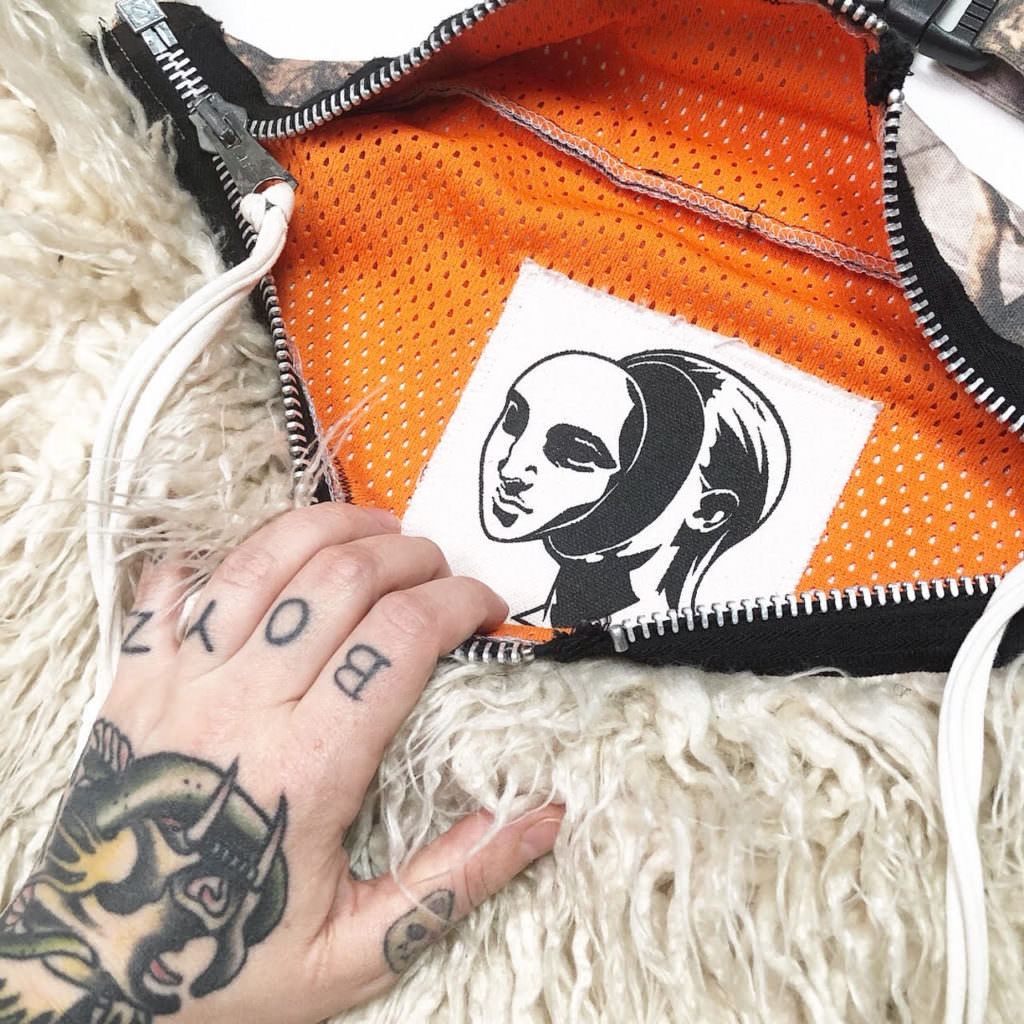Lithium Manufacturing Co., a Montreal-based streetwear brand, was founded by Charles Kay in 1993. An aspiring DJ as a teenager, Kay was an electronic music fan and started Lithium at the age of 17 during his summer break from CEGEP. Initially, Kay screen printed and embroidered T-shirts and hats with graphic Lithium logos, but it was the brand’s first cut and sewn garment, a workwear style jacket, that became a hit with urban youth and a uniform for ravers in Montreal and Toronto.
Eventually, Lithium grew to include both men’s and women’s fashion-forward streetwear collections and accessories.
The launch of Lithium coincided with the rise of underground, all-night raves in Montreal, and Kay would often sell his garments at these parties, directly to his peers. Lithium’s ascent was rapid, and the brand was soon available in local streetwear and rave boutiques such as Aritmetik and Juan & Juanita.
By 1996, Lithium had expanded into the American market and was stocked in more than 150 US stores.
The brand had sales offices in Montreal, New York, Tokyo and Hong Kong, with retail stores in Montreal’s Plateau neighbourhood and a flagship store in Tokyo’s Shinjuku district. Lithium was one of the first Canadian streetwear brands to achieve international success—at its height, it was sold in 18 countries.
Lithium’s style evolved over the course of the 1990s as it followed youth trends, with Kay always involved in design and product development. From 1993 to 1996, Lithium was very rave-oriented, offering garments with graphic logos and “fat pants” (leg widths in 20, 24, 27 and 30 inches). In 1997, with designer Willo Perron, Lithium shifted towards a minimal, hip-hop sensibility. Thanks to Perron’s contacts and network, the brand was carried by New York streetwear mecca Union, augmenting its street credibility. By 1998, a new designer, William Georges, who had freelanced as a graphic designer for Stüssy, joined Lithium. Under his influence, the brand’s style developed a more high-tech, futuristic aesthetic with a growing focus on complex designs and cuts. An iconic garment designed while Georges was with the company was the Boom Clock pant from 1999, made from synthetic, reflective performance fabric with transformable, zip-off legs. Vanessa Stettler, who had designed for Toronto-based rave brand Snug, joined Lithium at the end of the decade and was responsible for the creation of the women’s collections.
Lithium was known for its unique range of pants, but graphic T-shirts were a foundational garment for the brand, with dozens of logos designed for each season’s collection.
Kay recalled that the affordable logoed T-shirts were extremely popular, with the brand selling approximately 30,000 per season.
Initially, Lithium was manufactured domestically, but as the 1990s drew to a close and Lithium’s designs became more complex and commercial, the brand turned to offshore production for the majority of its apparel. Troy Moorehouse of streetwear giant Triple Five Soul introduced Kay to his factories in China, and the two collaborated on designs for both of their brands. Moorehouse’s distributor in Japan helped Kay bring Lithium to that country and open its Tokyo store.
Aligning itself with an urban, underground clientele, Lithium sponsored hip-hop artists and DJs of the 90s and early 2000s like The Black Eyed Peas, Goldie and A-Trak.
The brand advertised in magazines like Paper, Vibe and British countercultural magazine Dazed & Confused.
Vice always gave Lithium the front inside cover of its magazine for ad space. Kay was close friends with founders Shane Smith and Suroosh Alvi and, at one point, they had plans to collaborate on Vice stores in New York, Toronto and Montreal, which never came to fruition.
Lithium’s peak years were approximately 1993 to 2000, but at the dawn of the new century as its core clientele was ageing and subcultural youth fashion was turning towards an indie rock aesthetic, the brand no longer had the street credibility that had initially driven its success. By 2003, Kay had sold the company’s trademarks to its distributor in Japan, where Lithium lived on for several more years.
Although no longer in the fashion industry, Kay and his now-wife Vanessa Stettler produce furniture, lighting and accessories designed for both consumers and event rentals, running the companies Prunelle, Modern Event Furniture and Jardin Royalmount.
Sources
Interview with Charles Kay, Montreal, Quebec, April 6, 2022.
Lunardon, Catherine. “Northern Exposure.” Women’s Wear Daily, February 18, 2003, SII40-SII41.
Rabinovich, Simona. “Taking it to the Street,” The Montreal Gazette, April 6, 1998, F6.





